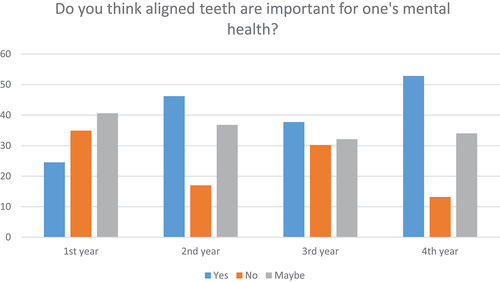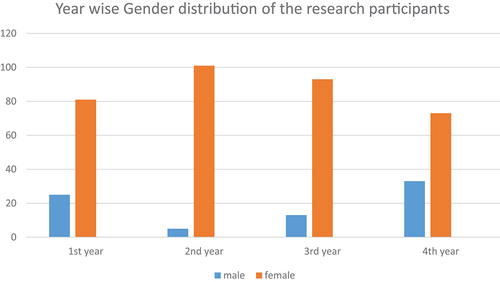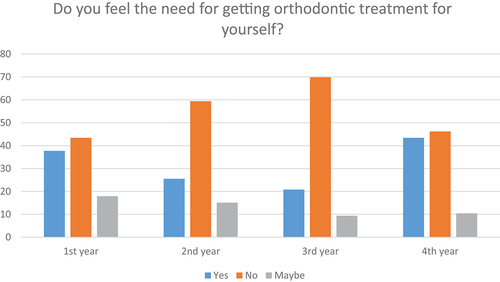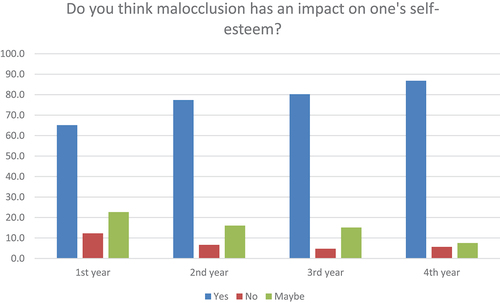Figures & data
Table 1. Percentage of students from each undergraduate year responding with ‘yes’ (correct response) to the questions pertaining to knowledge on malocclusion.
Figure 2. Responses of students (%) from each year as, ‘yes’, ‘no’ or ‘maybe’ to importance of aligned teeth for esthetics.
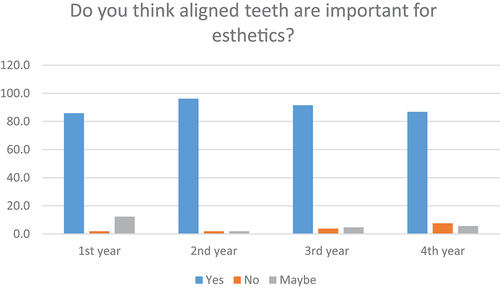
Table 2. Percentage of students from each year who responded with ‘yes’ to the questions on awareness around malocclusion.
Table 3. Percentage of students from each year who responded with ‘yes’ to the questions asked related to aetiology of malocclusion.
Figure 5. Responses of students (%) from each year as, ‘yes’, ‘no’ or ‘maybe’ to malocclusion’s impact on mental health.
